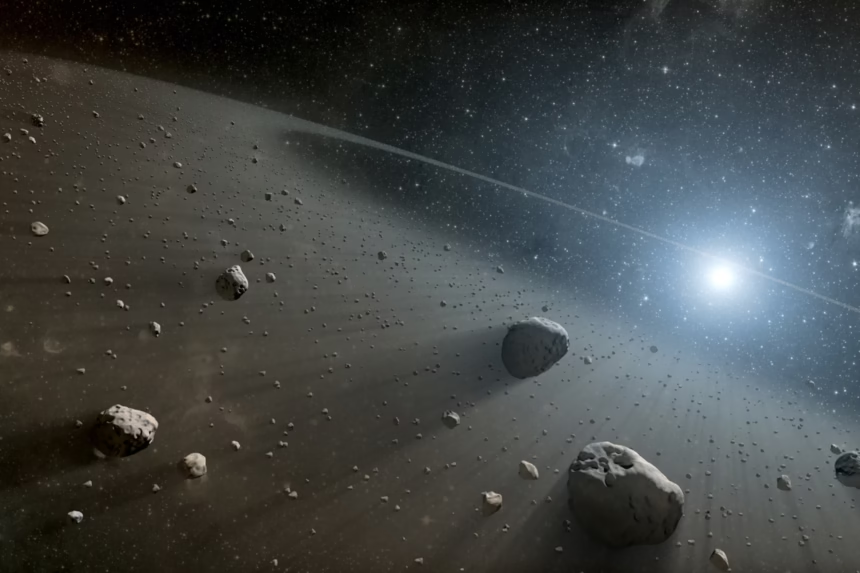Introduction
A newly discovered asteroid, 2024 YR4, has caught the attention of NASA scientists as it poses a potential impact risk to Earth in 2032. The asteroid, which was detected in December 2024, has an estimated diameter of 130 to 300 feet (40 to 90 meters) and is currently under close observation by NASA’s Planetary Defense Coordination Office.
As of February 12, 2025, NASA has assigned the asteroid a 2.1% chance of impact, meaning there is a 97.9% likelihood that it will not collide with Earth. However, given its trajectory and the possible energy release of 7.6 megatons of TNT if it were to strike, scientists and space agencies worldwide are taking this situation seriously.
So, how real is the threat? What would happen if 2024 YR4 impacts Earth? And what is NASA doing to prepare for such an event? This article provides a comprehensive breakdown of everything you need to know.
What Is Asteroid 2024 YR4?
🔭 Discovery and Tracking
Asteroid 2024 YR4 was first identified by NASA’s Near-Earth Object Observations Program in December 2024. Since then, NASA’s Center for Near-Earth Object Studies (CNEOS) has been monitoring the asteroid’s trajectory closely.
NASA and other international space agencies use advanced telescopes, including the James Webb Space Telescope (JWST) and radar tracking systems, to refine the asteroid’s path and better understand its characteristics.
📊 Key Facts About 2024 YR4
| Attribute | Details |
|---|---|
| Asteroid Name | 2024 YR4 |
| Estimated Size | 130 to 300 feet (40-90 meters) |
| Impact Probability | 2.1% (97.9% chance of missing Earth) |
| Potential Impact Date | December 22, 2032 |
| Potential Energy Release | 7.6 megatons of TNT |
| Monitoring Agencies | NASA, ESA, CNEOS, JPL |
How Likely Is an Impact? Understanding the Risk
While a 2.1% impact probability might seem small, it is higher than most near-Earth objects (NEOs) that NASA tracks. The next observation window in March 2025 will allow astronomers to refine trajectory calculations further.
🚀 Could the Asteroid Change Course?
Asteroids’ orbits can shift due to:
✔️ Gravitational interactions with planets
✔️ Solar radiation pressure
✔️ Yarkovsky effect (heat emission altering its course)
Even minor changes in speed or trajectory could increase or decrease the risk of impact in 2032.
🌍 What Happens if 2024 YR4 Hits Earth?
If 2024 YR4 were to impact Earth, the damage could be significant but not catastrophic on a global scale.
✔️ If it lands in the ocean, it could generate tsunamis.
✔️ If it hits land, it could flatten an area the size of a large city.
✔️ The shockwave and explosion could be comparable to the 1908 Tunguska event, which leveled over 800 square miles of forest in Siberia.
NASA’s Planetary Defense Measures
NASA has been actively working on planetary defense strategies to deflect or mitigate asteroid threats.
🛰️ 1. DART Mission: The First Successful Asteroid Deflection
In September 2022, NASA successfully carried out the Double Asteroid Redirection Test (DART), changing the orbit of asteroid Dimorphos. This proved that kinetic impactors could alter an asteroid’s course.
✔️ Future missions may attempt a similar deflection strategy for 2024 YR4 if necessary.
🔬 2. Observing the Asteroid with JWST
The James Webb Space Telescope (JWST) is scheduled to conduct detailed observations of 2024 YR4 in March 2025. These observations will:
✔️ Refine its size and composition
✔️ Determine its exact orbit
✔️ Identify possible deflection strategies
🚀 3. Nuclear Deterrent – A Last Resort
If an asteroid cannot be deflected, some scientists suggest nuclear explosion techniques as a last resort. However, this remains controversial and would require international agreement.
International Collaboration on Planetary Defense
NASA is not working alone—international agencies such as ESA (European Space Agency), Roscosmos (Russia), and China’s CNSA are collaborating on asteroid tracking and mitigation.
✔️ ESA’s Hera Mission (2026) will follow up on NASA’s DART test to assess asteroid deflection success.
✔️ China’s CNSA has proposed launching multiple kinetic impactors to alter an asteroid’s path.
Global efforts are ramping up as more potentially hazardous asteroids are discovered.
Public Reactions & Conspiracy Theories
Every time an asteroid is discovered, conspiracy theories emerge, claiming that NASA is hiding information or that governments are preparing underground bunkers.
🛑 Fact-Checking the Myths:
🔹 Is NASA hiding the asteroid’s true impact risk? → No. All data is publicly available on CNEOS.
🔹 Is there a secret space mission to destroy the asteroid? → No, but deflection strategies are being considered.
🔹 Could an asteroid wipe out humanity? → Not this one—it’s too small to cause global extinction.
NASA and space agencies emphasize transparency and scientific analysis, urging people not to panic but to stay informed.
Frequently Asked Questions (FAQs) About 2024 YR4
1. Will asteroid 2024 YR4 hit Earth?
➡️ As of now, the chance of impact is 2.1%, meaning 97.9% probability that it will miss.
2. When will we know for sure?
➡️ NASA’s next observation in March 2025 will refine the asteroid’s trajectory.
3. What would happen if it hits?
➡️ It could cause a large explosion, similar to the 1908 Tunguska event, but would not cause global catastrophe.
4. Can NASA stop the asteroid?
➡️ If necessary, NASA could use kinetic impactors (like DART) or nuclear deterrents to alter its course.
5. Should I be worried?
➡️ No. NASA is actively monitoring the situation, and the chances of impact remain low.
Final Thoughts: Should We Be Concerned?
The discovery of asteroid 2024 YR4 serves as another reminder that space agencies must stay vigilant in tracking near-Earth objects. While current calculations suggest a low probability of impact, scientists will continue to monitor and refine their data.
✔️ For now, there’s no need to panic.
✔️ NASA and international space agencies are prepared for planetary defense.
✔️ Future technology may further reduce asteroid impact risks.






